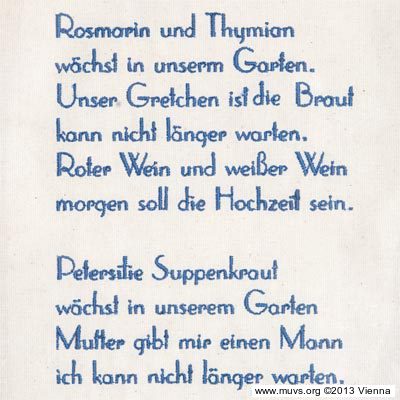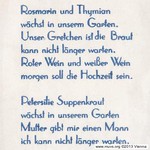Needlepoint Hanging about Plants
This children’s song from the German-speaking region has generally been accompanied by a circle dance, and it contains some important information: rosemary, thyme, parsley and chervil were employed as contraceptives. Midwives gave these herbs to women or these grew them themselves in their gardens. Obviously, their use for this purpose was known for some time, as “red wine” and “white wine” refer to menstruation and the days afterwards.
It’s assumed that the powerful essential oils of these plants affect the protein of the egg cell after ovulation in such a way as to prevent fertilisation. This rhyme also reveals that contraception was used by unmarried young girls while experiencing their sexuality with men.
Anke Wolf-Graaf, Die verborgene Geschichte der Frauenarbeit, Munich: Heyne Verlag, 1983
“The children’s song about myrtle, thyme and rosemary also provides evidence that these herbs, especially bridal myrtle (Myrtus communis), were used in the countryside to prevent premarital conception. For this reason, bride and groom still wear myrtle on their wedding day to symbolise the fact that they no longer need this prophylactic.”
From: L. v. Nida, Verhütung oder Abtreibung?, ca. 1929, p. 11

